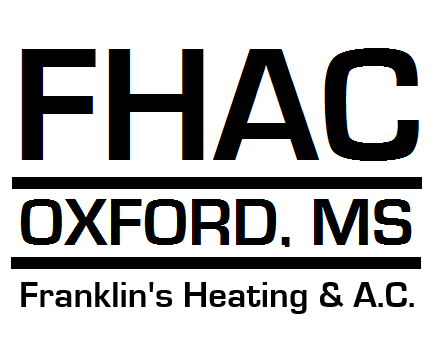
If you’re needing air conditioner installation in Oxford, you should also be investigating your new air conditioner’s SEER rating.
SEER is short for Seasonal Energy Efficiency Rating. Basically, it measures how productive your air conditioner is at changing electricity into cold air. A bigger number signifies your air conditioner is more efficient, which is great for your electric bills.
However, there are many differing solutions available for air conditioners. And a better SEER rating usually includes a bigger cost. So, how do you know which one is ideal for your house?
At Franklin's Heating & Air Conditioning, Inc, we offer a free, no-pressure home comfort analysis. You can get one by contacting us at 662-281-1231. Our knowledgeable air conditioner installers will partner with you to help you locate the right air conditioner for your home. Plus, they’ll also offer you a free, no-obligation estimate.
For the time being, let’s review SEER ratings and how they can affect your family’s comfort. And your electric expenses.
What Does the SEER Rating Even Matter?
In 2016, the federal government developed new SEER rules. New air conditioners are mandated at baseline 13 SEER in the northern United States and 14 SEER in the southeast and southwest. If you don’t know when you had your air conditioner put in or what its SEER number is, you can check the sticker on the condenser outside your house. If you can’t find the sticker, you can reach us at 662-281-1231 for assistance.
If your air conditioner was installed in advance of that year, it’s likely much less efficient. Air conditioning technology has quickly changed in the past couple of years, with major developments in energy efficiency and smart home capacity. Using your new air conditioner with a smart thermostat could help you spend less on electric bills, because the thermostat can automatically adjust your temperature settings when you’re gone.
If your present air conditioner has a SEER rating between 8 and 10, installing a 14-SEER system could save you close to 30–50% on annual cooling costs. Your savings are tied to your air conditioner size and your temperature settings.
Is the highest SEER Rating the Best?
An air conditioner with a higher SEER rating will be more efficient at consuming electricity for cooling. The most efficient models, which can go as big as 26 SEER, have ENERGY STAR® endorsement. This endorsement signifies the air conditioner matches EPA requirements for energy savings and environmental conservation.
While ENERGY STAR air conditioners are typically more expensive, you’ll usually get the difference repaid throughout the years through reduced power costs. These air conditioners, which are usually rated 16 SEER and up, consume about 8% less energy than other new units, according to ENERGY STAR.
One of the largest differences between a 14 SEER and 16 SEER is variable-speed capability. A variable-speed air conditioner can work at a number of speeds. This refines comfort for your house while keeping your electrical bills low. It can also keep temperatures and humidity more even, since it can work for longer without requiring a lot more electricity.
When buying a variable-speed air conditioner, you’ll want to check that your furnace or air handler is compatible. This is due to the fact your air conditioner depends on this equipment’s blower to send chilled air around your residence. Furnaces only last for around 20 years, so if yours is around that age, we recommend furnace installation at the same time so you can get all the advantages of your variable-speed air conditioner.
When you’re prepared to replace your air conditioner, the cooling professionals at Franklin's Heating & Air Conditioning, Inc are ready to help. Give us a call at 662-281-1231 to set your free home comfort analysis now.
